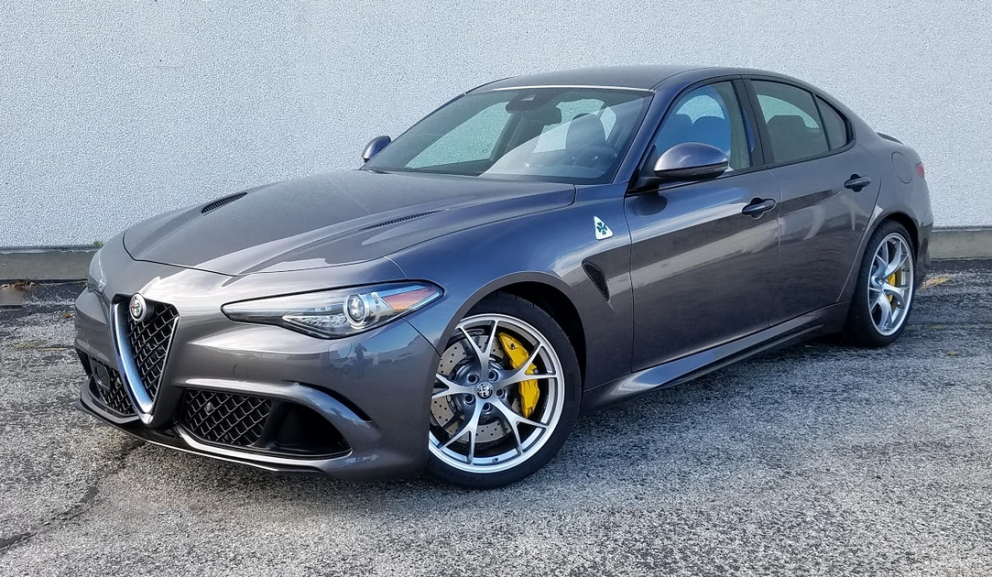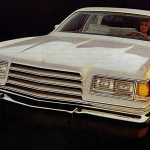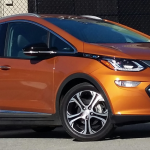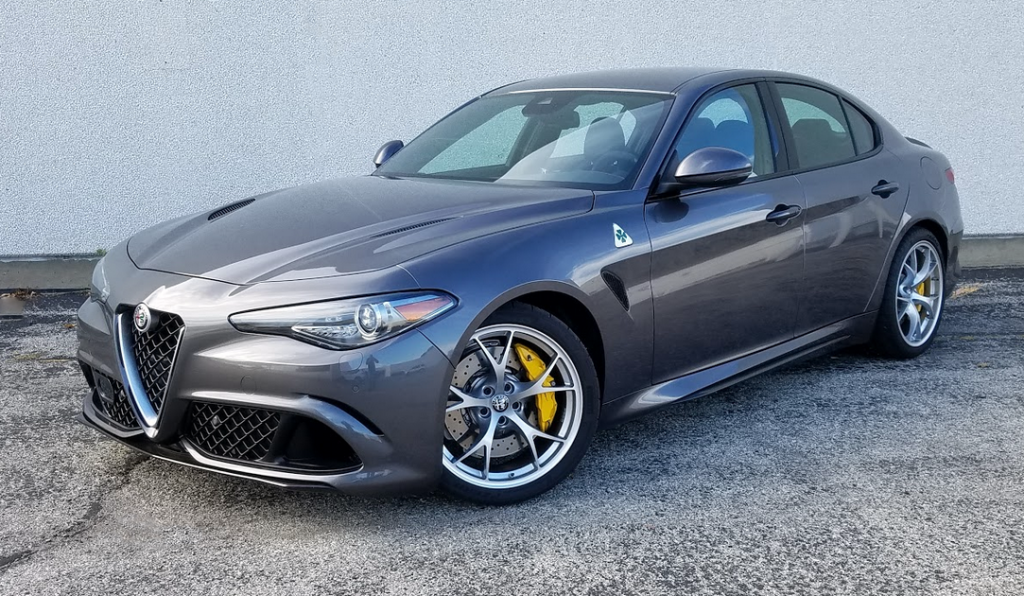
2017 Alfa Romeo Giulia Quadrifoglio 
Class: Premium Compact Car
Miles Driven: 148
Fuel Used: 10.7 gallons
Real-world fuel economy: 13.8 mpg
| CG Report Card | |
|---|---|
| Room and Comfort | B- |
| Power and Performance | A |
| Fit and Finish | A |
| Fuel Economy | D |
| Value | C |
| Report-card grades are derived from a consensus of test-driver evaluations. All grades are versus other vehicles in the same class. Value grade is for specific trim level evaluated, and may not reflect Consumer Guide's impressions of the entire model lineup. | |
| Big & Tall Comfort | |
| Big Guy | D |
| Tall Guy | B- |
| Big & Tall comfort ratings are for front seats only. "Big" rating based on male tester weighing approximately 350 pounds, "Tall" rating based on 6'6"-tall male tester. | |
Driving mix: 80% city, 20% highway
EPA-estimated fuel economy: 17/24/20 (city, highway, combined)
Base price: $72,000 (not including $1595 destination charge)
Options on test car: Driver Assistance Dynamic Package ($1500), Cargo Convenience Group ($150), Climate Upgrade Package ($250), cabon fiber steering wheel ($400), Harmon Kardon premium audio system ($900)
Price as tested: $76,795
Quick Hits
The great: Ferocious performance, unique styling inside and out
The good: Cabin fit and finish
The not so good: Observed fuel economy
Check out Consumer Guide’s Premium Compact Car Best Buys
John Biel
“Had we but world enough, and time.”
The 350-year-old lament of a lovelorn poet echoes in the breast of the twenty-first-century auto writer who, by circumstance, gets just fleeting exposure to an exciting new car like the 2017 Alfa Romeo Giulia Quadrifoglio.
Yes, Consumer Guide® editors had the chance to drive the eagerly anticipated 505-horsepower Italian sports sedan but with little time to linger over it. The math worked out this way: one car, two drivers, three days. Take it from “Mr. One Night,” that wasn’t long enough to justify the time required to learn the drill for selecting radio presets through the console-mounted controller.
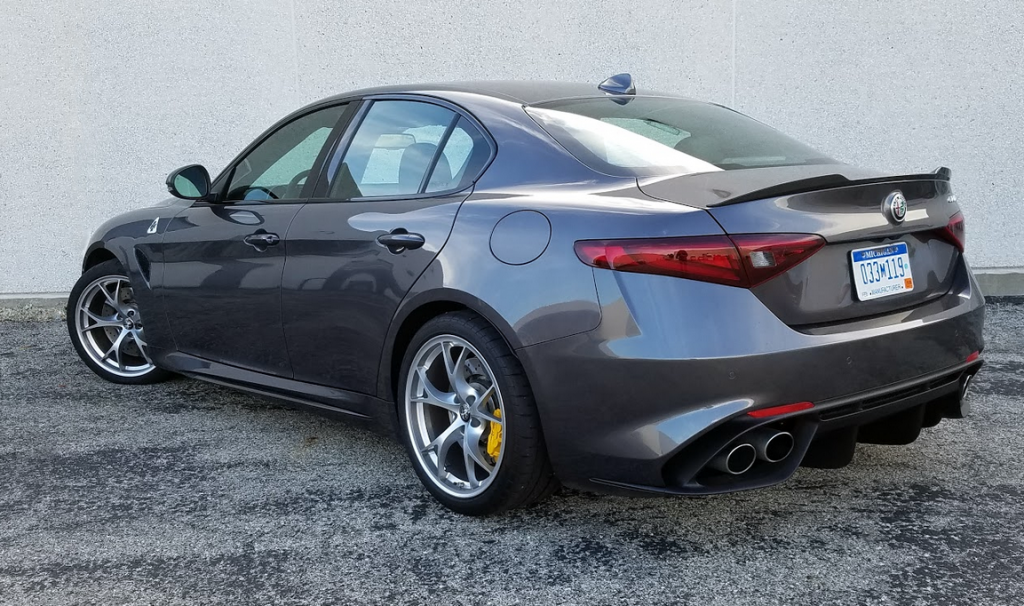
Still, even a single run home and back, a 58-mile round trip through urban rush-hour traffic, was enough to make some things about the car abundantly clear:
- The Ferrari-derived twin-turbo 2.9-liter V6 engine turns the Quadrifoglio into a thrill ride. Alfa Romeo claims a 0-60-mph time of 3.8 seconds and a top speed of 191 mph, and it’s eminently believable. When some big holes in expressway traffic presented themselves the Vesuvio Gray test car spanned them in a hurry. There’s a moment or two of lag time while the turbos get in stride, then POW! With the “DNA Pro” driving-mode selector in “Dynamic” or “Race” modes, the exhaust note is a wonderful rumble. If anything can be criticized, it’s a rough idle.
- The lone transmission available for the U.S. market is an 8-speed automatic. European models also offer a 6-speed manual, which we hope Alfa sees fit to bring to our shores eventually. Our test car’s 8-speed worked very well when left to handle the shifting all by itself or when the driver took over by working the steering-wheel-mounted shifter paddles. Paddle-activated shifts are lightning quick.
- ETs may be low but so are MPGs. Topping off after my turn in the car required 4.401 gallons of premium fuel for an average of 13.18 mpg. (Note that 69 percent of my drive was under city-type conditions.) Stop/start is standard, and dialing DNA Pro into “Advanced Efficiency” mode enables cylinder deactivation in search of fuel savings when full-bore performance isn’t necessary.
- Handling and braking are excellent. Steering is extremely precise—to the inch, the car goes where it’s pointed. There’s a balanced feel when, say, zipping up an expressway ramp, and with virtually no understeer. Damping changes with the DNA settings. As is almost always the case with performance cars, ride is firm—very much so in the Quadrifoglio’s case.
- Interior space is OK for a compact. By sight, rear legroom left the impression it would be very tight. However, slipping into the rear seat showed that there was enough room to keep a sub-6-foot adult happy. Small rear door openings do make exiting a bit of work, though. Seats are firmly bolstered. Indeed, large-build drivers might find them somewhat uncomfortable.
- Cabin materials are sporty luxurious. Leather covers the top of the dash and the door tops. Seats front and rear are leather with Alcantara inserts. Red contrast stitching and carbon-fiber accents are in evidence. (Other stitching colors are available.) A heated leather-wrapped steering wheel is standard but the test car had an optional wheel with sections of Alcantara and carbon fiber. Driving gauges show up well—numerals on the tachometer are especially large—and the starter button is attached to the steering-wheel hub within left-thumb’s reach for quick starts practically the moment you grip the wheel.
- Trunk space is limited—not necessarily strange for a car of this size class. However, the rear seat back doesn’t fold down, which is odd. Neither is there a pass-through. Cabin storage includes a good-sized glove box, smallish covered console box, dual covered cup holders ahead of the shifter, pockets in all four doors (though very small in back), and net pouches on the backs of the front seats.
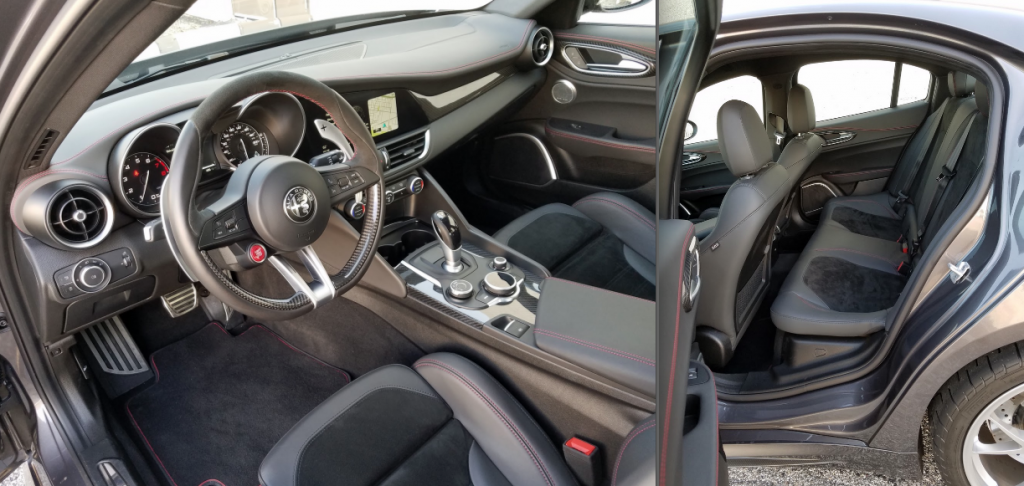
Pricing for the Quadrifoglio starts at $72,000—that’s significantly pricier than the competition, but the gap closes quickly once those rivals are optioned up with a comparable level of equipment. (A loaded-up BMW M3 can crest the $80K mark without too much trouble.) A quick list of key Quadrifoglio standard equipment includes a carbon-fiber active-aero front splitter to improve front downforce, staggered-width 19-inch wheels and tires, torque-vectoring drive, 8-inch infotainment display screen, navigation, dual-zone climate control, blind-spot alert, and rear cross-traffic alert. Our tester was equipped with the Driver Assistance Dynamic Package, which includes forward-collision warning, automatic braking, and lane-departure warning with a tone that is impossible to ignore.
In due time, there will be cheaper Giulia models with a 2.0-liter turbocharged 4-cylinder engine. Until the chance presents itself to drive them, Andrew Marvell, I’m feeling you, brother.
Damon Bell
Traditionally, if you were a buyer in the market for a super-performance premium-compact sedan, your default choice was a BMW M3, or perhaps a Mercedes-Benz C-Class AMG model. For 2016, shoppers with American-brand leanings could opt for the Cadillac ATS-V. Now, Alfa Romeo is looking to upset the apple cart with the introduction of the 2017 Alfa Romeo Giulia Quadrifoglio.
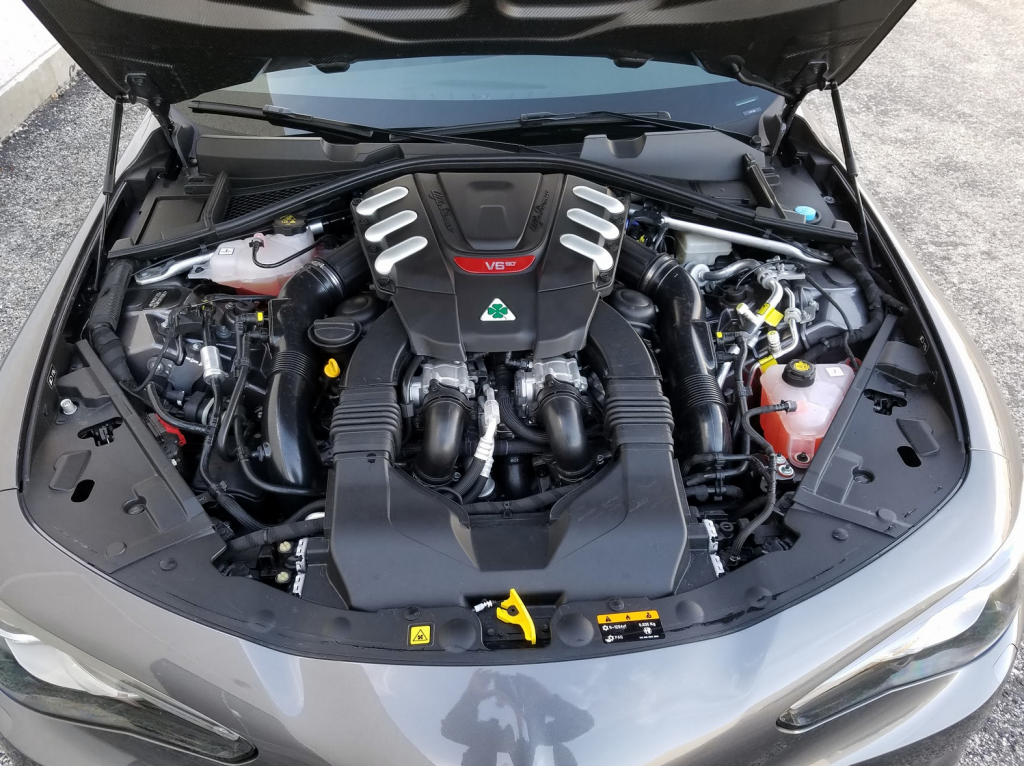
Alfa is getting right to the good stuff with its rollout of the Giulia compact-sedan lineup. The flagship Quadrifoglio model launches first, and is slated to be followed by base models and midlevel Ti models, both of which are powered by a 280-horsepower turbocharged 2.0-liter 4-cylinder and are available with all-wheel drive (the Quadrifoglio is rear-drive only).
Test Drive: 2017 Infiniti Q60 3.0t Premium
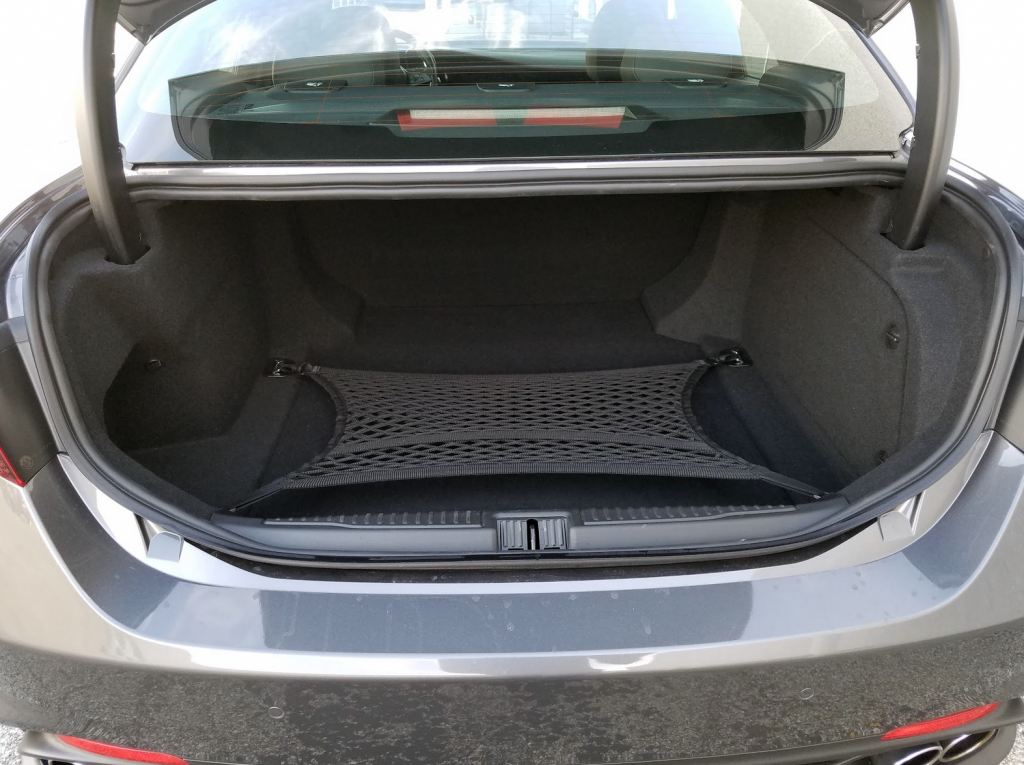
In Quadrifoglio form at least, the Giulia is the sexiest compact 4-door sedan I’ve seen in a long time. It hits all the right luxury-performance notes: an aggressive front fascia (distinctively styled, without being too weird), hood and front-fender vents, “ground effects” rocker panels with carbon-fiber trim, a carbon-fiber trunk-lid spoiler, a pronounced rear diffuser with quad exhaust tips, and a beefy wheel-and-tire package with lots of viewing area for the monster cross-drilled disc brakes and huge yellow calipers (black calipers are also available if the yellow is too flashy for you).
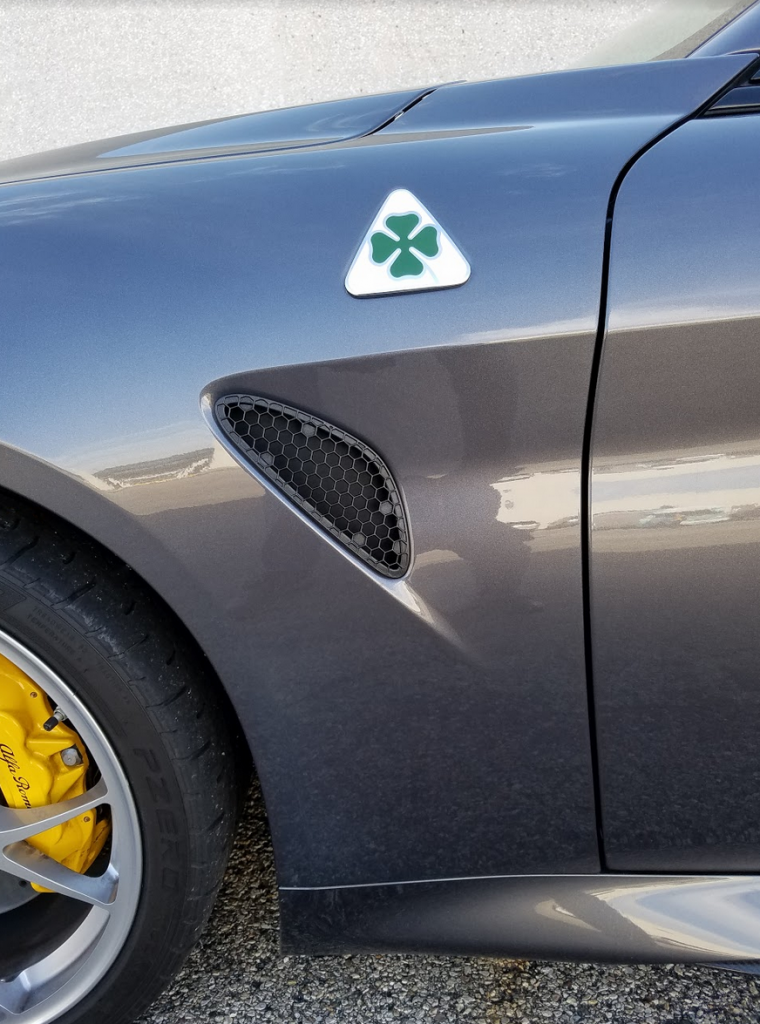
Likewise, the Quadrifoglio’s interior is a fine example of high-end performance-sedan design. Among the nicely executed upscale details are embossed Alfa Romeo logos on the headrests; Alcantara inserts on the seats and steering wheel; glossy carbon-fiber inserts on the steering wheel, doors, and console; and contrasting red stitching throughout the interior (dark gray or green/white stitching is also available). We especially appreciated the unusual touches such as the steering-wheel-mounted start/stop button, the steering-wheel shifter paddles with a cut-out “+” emblem on the right paddle and “-“ emblem on the left for upshifts and downshifts, and the central infotainment screen housing that follows the flow of the dash-top styling. It may not hit quite the same overall quality level as BMW’s or Mercedes-Benz’s best, but this is a great-looking interior.
It’s not a particularly spacious interior, however—though that is kind of par for the course in the premium-compact-car class. Both the front and rear door openings are quite stingy. Getting my 6’6” self in and out of the driver’s seat was a bit tricky, and those pronounced rocker panel extensions—which stick out about 3 or 4 inches past the doorsills—didn’t help. However, I had decent room overall once I was situated behind the wheel. Plus, the front seats strike a good balance between comfort and support—the side bolsters were snug enough to keep my backside in place in fast corners, but not so tight as to be uncomfortable.
Other interior nitpicks include the lack of a height-adjustment feature on the front-seat shoulder belts, and a couple Euro-style control-interface quirks—like the oversized console control knob that doesn’t seem to control that much. And those large steering wheel paddles might be great for quick shifts, but they block easy access to the column stalks behind them… priorities, I guess.
The steering wheel itself is a bit smaller in diameter than most, which contributes to the high-performance feel. The ratio is very quick, though I found the steering feel to be disappointingly numb; I wished for more road feel and feedback. Even with the adaptive suspension dialed in to its softest setting, the ride is still quite firm, but livable for the type of enthusiast buyers this car will attract. Acceleration is blistering… the Quadrifoglio’s 505-horsepower rating handily trumps the BMW M3 (444 hp w/ Competition Package) and the Cadillac ATS-V (464 hp). The Mercedes-Benz AMG C63 S comes closest, with 503 hp, but all of these cars’ 0-60 times—which fall in the 3.8- to 4.1-second range—are a blink of an eye apart.
When compared to its similarly thrilling competitors, the Quadrifoglio’s primary appeal boils down to its distinctive, Italian-flavored personality. The Alfa Romeo brand’s future in the U.S. is a bit uncertain at this point—hopefully the forthcoming 4-cylinder Giulia models will make real inroads in the mainstream premium-compact-car market—but the exhilarating Quadrifoglio makes a strong case for itself.
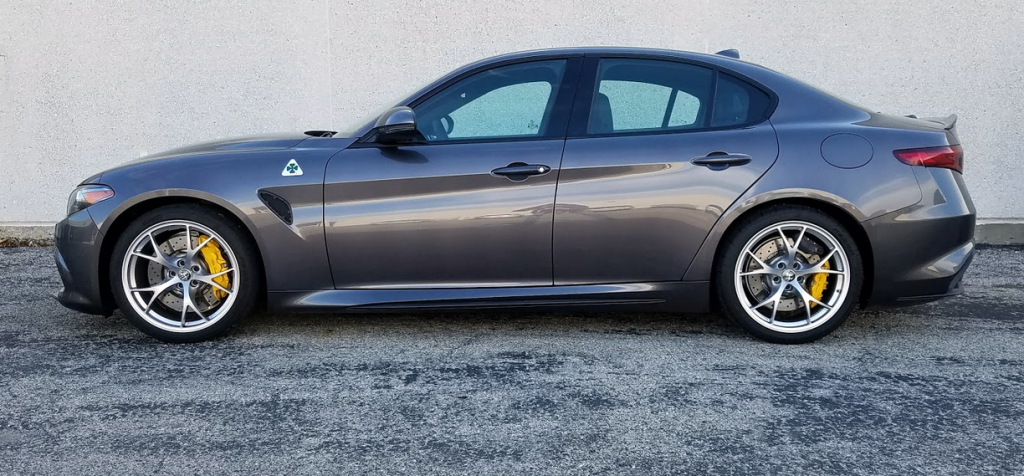
Future Collectibles: 2015-16 Alfa Romeo 4C

